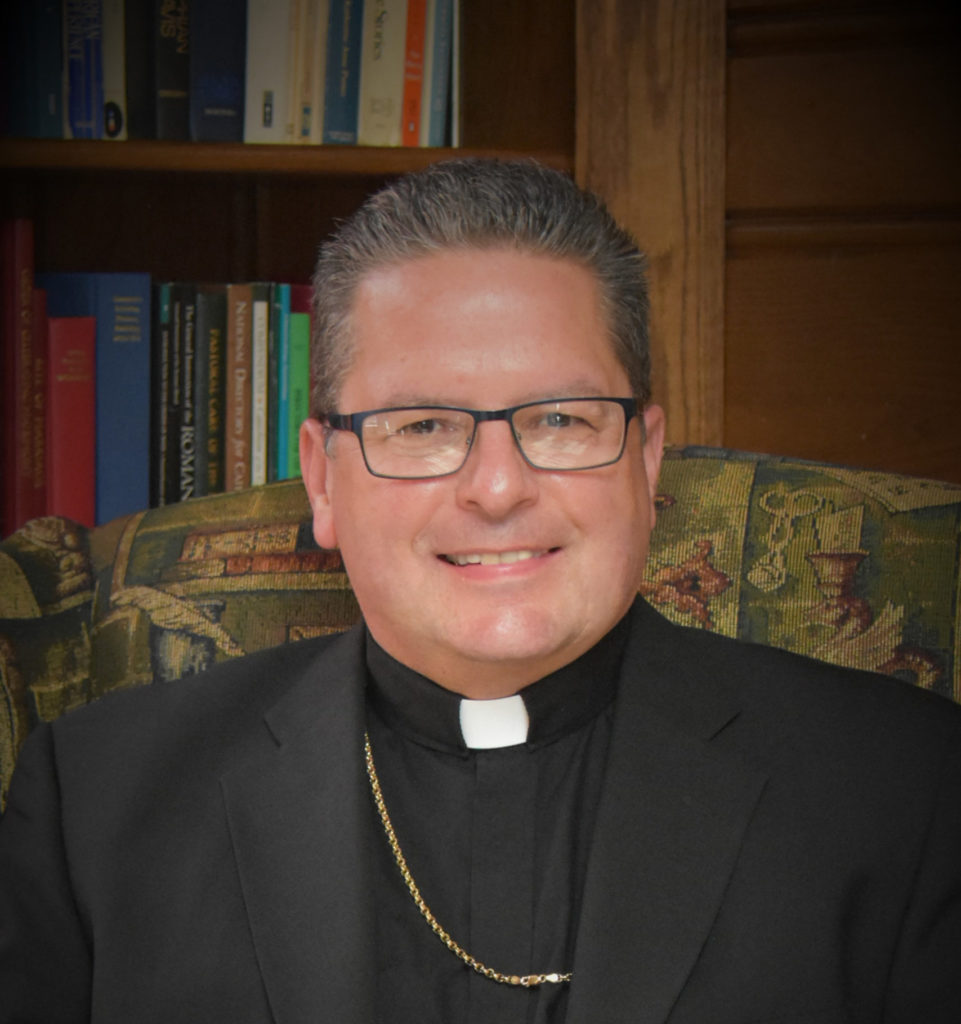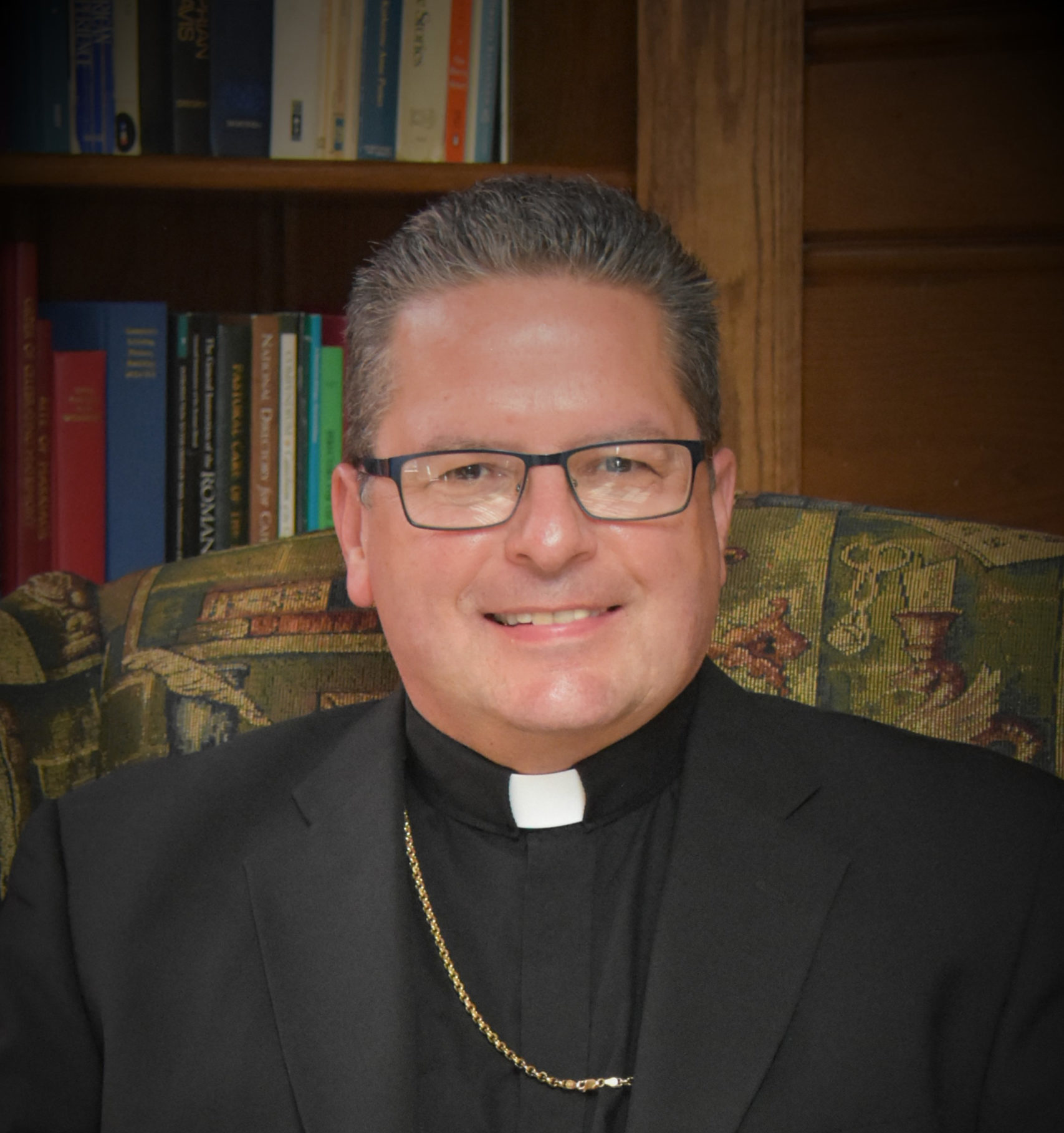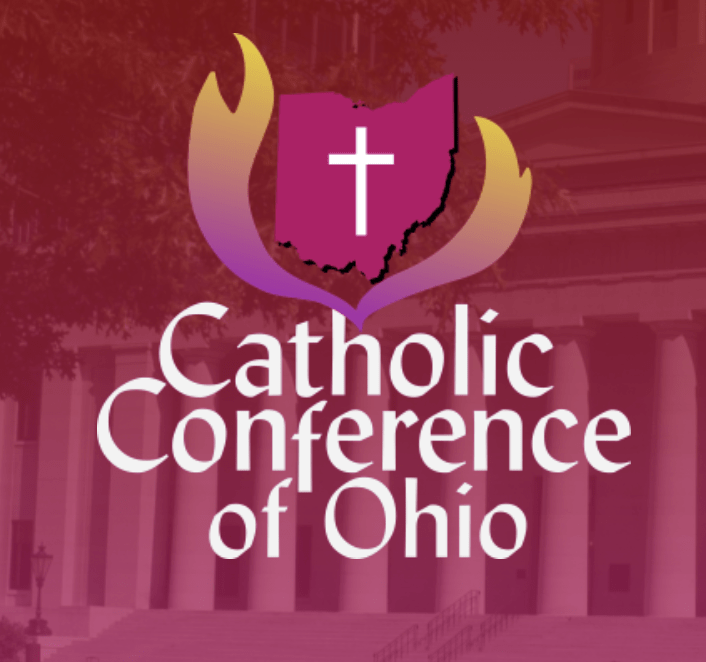WALKING BY FAITH TOGETHER | The Catholic Exponent
MOST REV. DAVID J. BONNAR
Bishop of Youngstown
Note: Adapted from Bishop Bonnar’s June 19, 2022 Homily for the Solemnity of the Most Holy Body and Blood of Christ in St. Columba Cathedral. This liturgy was the official launch of the National Eucharistic Revival in the Diocese of Youngstown. Full coverage of the official launch will appear in the July 8, 2022 edition of the Exponent. The next Eucharistic Revival Mass and Eucharistic Procession will be at Canton Christ the Servant Parish on July 10 at 11 a.m. Please see the full schedule of Eucharistic Revival events at www.doy.org/EucharisticRevival/
When I was ordained and installed as the sixth bishop of Youngstown in January 2021, it was like jumping on a moving train with a history totally unknown. I did not know anything about the diocese, and the clergy, religious and faithful knew nothing about me. As we keep moving forward on the train, I am becoming more and more aware of the rich tradition of this local Church and I trust everyone is getting to know more about me.
A few months ago, a priest gave me a book which was commissioned by the first bishop of Youngstown, Bishop James McFadden, entitled “The March of the Eucharist.” In the forward of that book dated 1951, the eighth year of the existence of the diocese, Bishop McFadden wrote these words:
“Devotion to Christ the King in the Eucharist is the source and inspiration of all Catholic action. The Church has no greater power to strengthen those souls who wish to devote their lives to the service of Christ than the Most Blessed Sacrament.”
Indeed, the Holy Eucharist is our source, inspiration, and power.
Today we celebrate the Solemnity of the Most Holy Body and Blood of Christ. This is traditionally a day for the Church to celebrate and behold the great gift of the Holy Eucharist.
For the Church in the United States this day is even more special since it marks the beginning of a three-year Eucharistic Revival. In virtually every cathedral of this nation, bishops are celebrating Holy Mass followed by a Eucharistic procession.
Eucharistic processions are often associated with this Eucharistic Feast previously called Corpus Christi. Many of these processions stretched through various towns and cities. As the procession would come by, the faithful would kneel in reverence. In some cases, there would be stations along the way for prayer and devotion. The practice of Eucharistic processions has reemerged in parishes. In fact, in the parish in which I served as pastor for 11 years we celebrated a Eucharistic procession each year on this feast.
These Eucharistic processions are a tangible way in which we take the Real Presence of Jesus into the streets to be an integral part of our journey. As Pope Francis notes in his apostolic exhortation, “The Joy of the Gospel,” we come to Mass so that we might go forth. In that going forth we bring Christ to the world and in the words of Saint Augustine: “we become what we receive.” God knows that our world needs the presence of Jesus more so now than ever before to bring light to darkness, peace to chaos, love to indifference.
The second reading today from the First Letter of St. Paul to the Corinthians is believed to be the oldest account of the Eucharist. St. Paul passes on what he received from the Lord – that on the night before his death, Jesus took bread, gave thanks, broke it and said:
“This is my body that is for you.”
Then He took the cup and said:
“This cup is the new covenant of my blood. Do this as often as you do it in remembrance of me.”
St. Paul adds that every time we eat this bread and drink this cup, we proclaim the death of the Lord until he comes again.
This sacred account, along with the words that come from the lips of Jesus, can become all too familiar because we hear them so often. Or sadly, they can become foreign because we do not hear them enough. Given the distraction of the world along with its many forces we can so easily lose sense of the “source, inspiration, and power” of the Holy Eucharist not just at the altar, in the monstrance, or in the tabernacle but also in one another – for we are the Body of Christ. This wondrous, glorious, mysterious, and powerful presence can become commonplace and easily dismissed. In fact, a recent Pew Research Study indicated that 69 percent of American Catholics believe that Jesus is only symbolically present in the Holy Eucharist.
As a result, the bishops of our nation have called for a Eucharistic Revival. The word “revive” is defined in the dictionary as “an improvement in the condition of” or “a reawakening of religious fervor.” We could never improve the essence or condition of the Holy Eucharist, for it is the Real Presence – body, blood, soul, and divinity of Jesus – the gift that keeps on giving. What we can improve is our appreciation and respect of it through our attention, reverence, and devotion.
In a homily on the First Letter of the Corinthians, the source of our second reading today, St. John Chrysostom states:
“Let us then awaken in ourselves a feeling of awe and let us show a far greater reverence than did those foreigners, for we shall bring down fire upon our heads if we approach this sacrament casually, without thinking of what we do.”
Nearly 10 years ago on a retreat marking our 25 years of priesthood, my classmates and I heard a talk from Bishop Zubik, our bishop. He said something I will never forget. He shared what his second-grade teacher, Sister Eugenia, shared with his class:
“Children: always receive the Holy Eucharist as if it were your first time, the last time, the only time.”
Whatever our age, regardless of how many times we receive the Eucharist, we need to behold it as a sacred time. This Eucharistic Revival affords us many opportunities. This is a good time for us to individually reflect upon that first time we received our Lord at First Holy Communion. It is also helpful to look back at those months when, due to the pandemic and the closure of our churches, we had to fast from the Holy Eucharist and rely on spiritual communion. We can be ever more grateful for this precious gift.
This time of the revival is also an opportune time to examine our preparedness and disposition – or lack thereof – for the Holy Eucharist. As Catholics, when we receive the Holy Eucharist, it is proper for us to be in a state of grace and in communion with the Holy Church. There is no better way for us to prepare to receive the Holy Eucharist than to periodically celebrate the Sacrament of Reconciliation. In addition, we might also in this time of revival reflect on how we are to receive the Eucharist. We are to bow and then open our mouths or our hands and receive our Lord with reverence and thanksgiving, aspiring to become what we receive.
The Eucharistic Revival also invites us to look again at how we care for our churches. As Bishop McFadden said:
“One of the most sublime acts of devotion to Christ the King in the March of the Eucharist is to build a house of worship, be it a beautiful church, a gorgeous cathedral, a magnificent basilica or just a plain, simple little mission chapel wherein reposes the Sacred Host in the Tabernacle.”
This time of revival also presents an opportunity to behold Jesus in the tabernacle with the proper silence, genuflection, and devotion. We might want to make more of a concerted effort to visit our Lord in the Blessed Sacrament and be with Him. Finally, this time of revival offers an opportunity to behold the presence of Christ in one another and seek oneness with Jesus and one another. For the Scriptures remind us:
“We are one body, one body in Christ.”
As we begin this Eucharistic Revival and continue this March of the Eucharist, I wish to conclude with one more thought from Bishop McFadden, the first bishop of Youngstown. In the forward of the book he asks:
“What is the meaning of the small host with the little light burning before it in our churches? This is indeed the Bread that has come down from Heaven – the very Body and Blood, Soul and Divinity of our Lord and Savior, Jesus Christ. The Holy Eucharist, a Divine Sacrament instituted by the Son of God, Christ Himself, and called by the Church, the Mystery of Faith, is a pledge of our future glory and a symbol of our unity as members of one body, of which Christ is the Head.”



